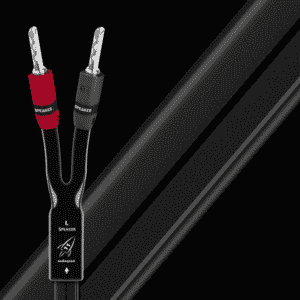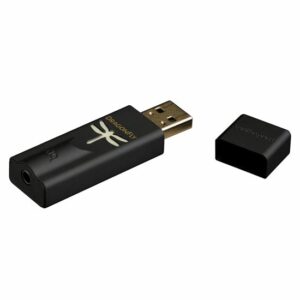Description
SOLID 5% SILVER CONDUCTORS FOR IMPROVED SUBWOOFER PERFORMANCE
Solid 5% Silver-Plated Copper Conductors: A superbly cost-effective way to maximize a video or digital cable, harsh and horrible for full-range audio, but like turning up the “sharpness” for a subwoofer, enhancing articulation and intelligibility.
POLYETHYLENE AIR-TUBE INSULATION
Any solid material adjacent to a conductor is actually part of an imperfect circuit. Wire insulation and circuit board materials all absorb energy. Some of this energy is stored and then released as distortion. AudioQuest, however, uses Polyethylene Air-Tube Insulation on both conductors, for increased geometry stabilization and improved clarity. Because air absorbs next to no energy and Polyethylene is low-loss and has a benign distortion profile, Polyethylene Air-Tube Insulation, with its high air content, causes much less of the out-of-focus effect common to other materials.
DIELECTRIC-BIAS SYSTEM WITH RADIO FREQUENCY TRAP
All insulation between two or more conductors is also a dielectric whose properties will affect the integrity of the signal. When the dielectric is unbiased, dielectric-involvement (absorption and non-linear release of energy) causes different amounts of time delay (phase shift) for different frequencies and energy levels, which is a real problem for very time-sensitive multi-octave audio. The inclusion of an RF Trap (developed for AudioQuest’s Niagara Series of power products), ensures that radio-frequency noise will not be induced into the signal conductors from the DBS field elements. (DBS, US Pat #s 7,126,055 & 7,872,195 B1)
TRIPLE-BALANCED GEOMETRY (SEPARATE GROUND-REFERENCE CONDUCTOR)
Our Triple-Balanced Geometry uses a separate ground-reference conductor, so the cable’s shield is never used as an inferior conductor. Whether prepared with RCA or XLR plugs, the cable’s three conductors ensure that the positive and negative signals have equally superior, low-distortion conducting paths.
CARBON-BASED 4-LAYER NOISE-DISSIPATION SYSTEM
It’s easy to accomplish 100% shield coverage. Preventing captured Radio Frequency Interference (RFI) from modulating the equipment’s ground reference requires AQ’s Noise-Dissipation System (NDS). Traditional shield systems typically absorb and then drain noise/RF energy to component ground, modulating and distorting the critical “reference” ground plane, which in turn causes a distortion of the signal. NDS’s alternating layers of metal and carbon-loaded synthetics “shield the shield,” absorbing and reflecting most of this noise/RF energy before it reaches the layer attached to ground.







Reviews
There are no reviews yet.